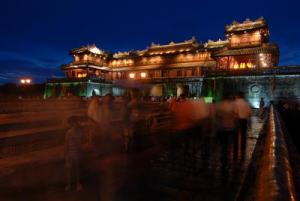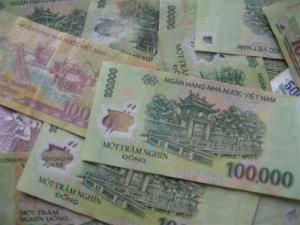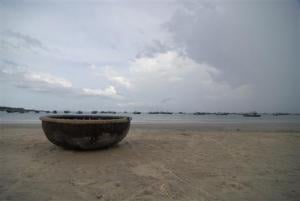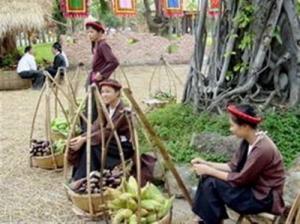Tay Nguyen: Tourist Magnet
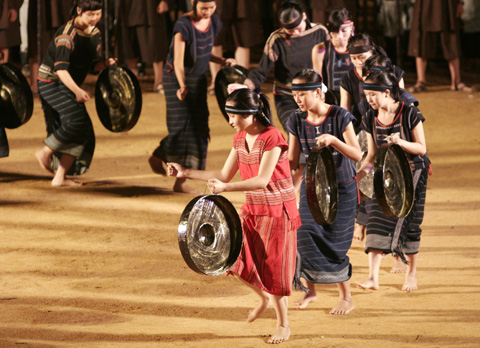
The Central Highlands of Vietnam celebrate National Tourism Year. And with its many, beautiful natural sights such as mountains, waterfalls, among others, the more tourists visit the place at this time of the year to join in the festivities.
The Central Highlands is made up of the provinces of Lam Dong, Dak Lak, Dac Nong, Gia Lai and Kon Tum. Tay Nguyen is also located in the Central Highlands, known for its chien or gong culture. In fact, UNESCO identified the place as a Masterpiece of Humanity Heritage of Mankind. But aside from this, Tay Nguyen is known for many other things, both man-made and natural.
According to the Department of Culture, Sports and Tourism, Tay Nguyen is recognized for its communal houses, hidden beautiful villages in high mountains and thick jungles, and waterfalls. It is also famous for its Dak Lak coffee because of its strong yet pleasant smell. Wild sunflower is the symbol of Tay Nguyen. But local and foreign tourists also flock to the place for its sunlight and wind. The Suoi Vang Lake in Lac Duong District (about 20 kilometers from Da Lat) is a popular tourist destination because of its freshness, beauty and size. In fact, the lake is so big that it supplies fresh water to the whole city of Da Lat everyday.
The traditional Tet or Lunar New Year also draws in visitors from all parts of the world. The Ankroet Waterfall where French Governor General Jean Decoux chose to build the first hydro-electric plant in Vietnam in 1942 is also an interesting place to visit because of the M'Nong, Ma and E De ethnic groups who have lived in the area for hundreds of years. Le Gun Waterfall in the Nam Nung Preservation Area in Dak Song District is stunning at 350 meters high and surrounded by virgin jungle.
Tay Nguyen is also rich in wildlife such as tigers, gayals, stone cranes and other wild animals. Yok Don National Park at Dak Lak is home to gongs and elephants. Elephant ride is one of the park's tourist attractions wherein the guest is made to ride on an elephant's back while he or she is taken on a tour (by a tour guide) to the lake and learn about the lives of the M'Nong people who reside by the banks. Visitors are also treated to a gong performance by a bonfire while drinking ruou can, the traditional wine drank out of a jar through pipes.
Bao Dai Palace is another must-visit at Tay Nguyen. It was built by Vietnam's last king as his “weekend getaway.” Breathtaking lakes and forests are just one of the perks of the place, not to mention the beauty, size and grandeur of the palace itself. At night, guests can stay in a bungalow and have the rare treat of cooking and eating dinner with fish such as gudgeon and thac lac caught fresh from the lake. Thac lac in particular is best cooked with noodles and scallions on a charcoal brazier. The fish tastes so good that it has become a specialty in many top-grade hotels and restaurants in Dak Lak. But so in-demand too that it often runs out of supply. Being able to experience the dish from its source itself is a one-of-a-kind experience visitors will always remember. The lake and fish are important resources in the area which bring in an annual millions of dongs, a big help in the livelihood and quality of life for the local residents.
The communal house of the Ba Na ethnic group in Hoi An District, Gia Lai Province is another favorite destination among tourists. The house is interesting because although it is made with basic local materials such as wood, rattan and bamboo, it was done so without the use of any nails. It is an integral part of the village as important gatherings are convened here such as meetings, local announcements, cultural activities (such as their traditional gong performaces), worships to their gods and dieties, and other festivals. The communal house is so essential that it is considered the “soul” and “strength” of the community.
Kon Plong is a mountainous district in Kon Tum Province set at 1,000 meters above sea level. Fresh, cool air is guaranteed the whole year round. Mang Den Town is a natural beauty of waterfalls, pine forests and wild flowers. The district also boasts of good food. Boiled bamboo shoots dipped in garlic fish sauce with chili is a winner among locals and tourists alike. Bamboo shoots can also be used in other dishes such as pork and fish. Selling bamboo is one of the major sources of income in the district. The place is also known for its chestnuts and medicinal herbs such as ginseng, medlar and cot toai bo.
Although Mang Den Town is considered a newly-formed district, the Depatment of Culture, Sports and Tourism traces its tourism potential to the late 19th and early 20th centuries when the French planted hundreds of pine forests and built resorts by the lakes, waterfalls and virgin forests which have become centers for eco-tourism. To date, the government has approved an eco-tourism project for the town which is actually a hub that connects Laos, Cambodia other ASEAN countries.
1n 2013, over three million local and foreign visitors entered Kon Tum Province. Another 3.4-4 million is targeted this year. Among other things, this is owed to the province's “paradise of flowers” and Da Lat's 120th anniversary. Moreover, other factors such as roads, communication and services are continually developed, encouraging more tourists to visit the place. The local government aims to connect the five provinces in order to foster both internal progress and tourism.





